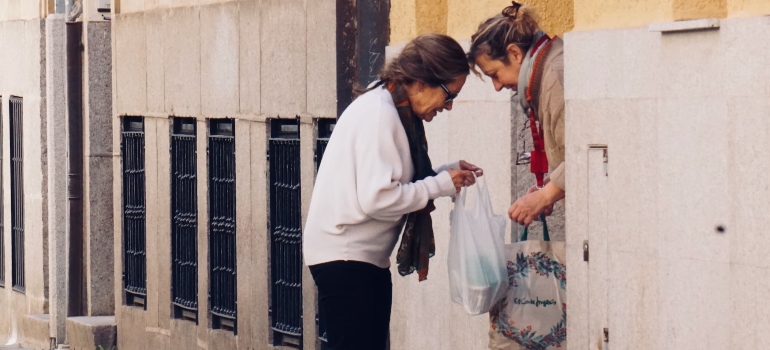Relocating often stirs a cocktail of emotions. While the thrill of a new environment beckons, the longing for familiar faces is undeniable. Yet, building a community after the move is not only possible but vital for a wholesome settling-in experience. This adventure, while challenging, can be fulfilling. After all, moving to a new city doesn’t mean leaving behind the essence of community. With services from the best movers in Florida, that we can connect you with, the physical move becomes seamless. But how do you achieve that emotional connection in your new neighborhood?
How to Break the Ice With Your New Neighbors
Firstly, understand the impact of a simple gesture. Believe it or not, research shows that a mere smile can reduce the distance between strangers by over half. So, imagine what a warm smile coupled with a friendly “hello” can do in your new locale. It’s an invitation to converse, connect, and understand. Moreover, consider hosting a housewarming party. It doesn’t have to be extravagant. Even a modest gathering can do wonders.

Observing and adapting to your neighbors’ routines can also help bridge the initial awkwardness. Let’s say you notice your next-door neighbor jogging at 7 am. If you’re a fitness enthusiast, that’s an opportunity! Join them occasionally, or wave when you see them. Shared routines often lead to shared stories.
Immersing Yourself into Local Happenings
Transitioning smoothly also means tapping into the local scene. Community centers, often considered the heartbeat of a neighborhood, offer various activities and groups. In fact, 65% of individuals who join local clubs or events claim to feel more integrated within six months. Local events, like street fairs or garage sales, are gold mines for budding connections. For instance, attending a garage sale can give you insights into local tastes and treasures. And remember, participating isn’t just about buying; it’s about interacting. Additionally, volunteering boosts your social circle and helps you with building a community after the move. A study in Miami found that volunteers are 42% more likely to establish deep-rooted connections in new neighborhoods compared to non-volunteers.
Try to Make Online Connections Locally
In today’s digital age, connecting offline is just one side of the coin. Online platforms, such as Nextdoor, play a pivotal role in creating virtual neighborhoods. Such platforms can be an excellent start for interstate movers Florida residents have come to rely on for local advice. Local Facebook groups or Meetup events also hold potential. Just moved to Tampa? There might be a “Tampa Newbies” Facebook group awaiting your membership. Joining these platforms not only fetches practical advice (like finding the best pizzeria) but also facilitates introductions.

Lastly, with the surge of virtual events – from webinars to workshops – participating locally online can supplement your offline endeavors. Engage in these, and you’ll soon realize you’re not just an individual in a new city, but a part of its digital fabric.
From Small Talk to Heartfelt Conversations, Building a Community After the Move Takes Time
In the initial stages, you might find yourself exchanging pleasantries about the charms and challenges of suburban living in Florida or the weather. Yet, true connections go beyond that. To establish profound bonds, transitioning from light chitchat to sincere interactions is crucial. Surprisingly, practicing active listening could increase one’s likability by up to 40%. By genuinely engaging in your neighbor’s tales about their weekend escapades, you make them feel valued. Remember, everyone has a story waiting to be heard, and by lending an ear, you build an authentic connection.
Also, it’s essential to steer clear of assumptions. The diverse blend of cultures, backgrounds, and experiences that Florida boasts means that every neighbor brings a unique narrative. Sharing a laugh over common community experiences, like the occasional alligator sighting or beach day stories, often binds people together.
The Pillars of Community: Respect, Understanding, and Boundaries
Transitioning into your new Florida community doesn’t just involve forging friendships; it’s also about understanding and respect. Florida’s multicultural fabric brings forth a mosaic of traditions, habits, and etiquettes. For example, discussions about choosing the best schools in Florida could reflect a range of preferences based on cultural values and educational philosophies. Embracing these cultural nuances, as opposed to merely tolerating them, plays a pivotal role in integrating harmoniously.
Furthermore, while forming connections is the goal, it’s equally vital to maintain personal boundaries. A report by the Florida Community Association highlighted that 70% of community disagreements stemmed from boundary overstepping. Thus, while you might be keen on attending every community gathering, knowing when to grant space is just as essential. Additionally, community etiquettes, like adhering to noise levels or understanding property lines, are not just about rules but also about mutual respect. By being considerate, you’re not only being a good neighbor but also fostering a more harmonious community environment.
Cultivating Connections is the Next Step
With initial introductions out of the way, nurturing these newfound connections is the subsequent step. One might think that, in an age dominated by digital interactions, old-fashioned gestures like dropping by with baked goods might be outdated. However, a recent survey found that 82% of residents felt more connected to neighbors who occasionally checked in or shared little gestures.

Participating in community projects, like neighborhood clean-ups or local tree-planting drives, can also propel connections. Working side by side for a common goal often fosters camaraderie. And when celebrations like birthdays or local festivities come around, they offer another avenue to grow deeper roots in your community.
Building a Strong Community Has Cascading Benefits
In conclusion, the efforts you put into building a community after the move have ripple effects. For one, a connected neighborhood naturally enhances safety. When residents know and look out for one another, the community’s security net strengthens. Secondly, support during challenging times becomes more accessible. For instance, during Florida’s hurricane season, a well-connected neighborhood can be a reservoir of resources, advice, and assistance. The emotional support, shared joy, and the collective spirit that emanates from such bonds are immeasurable. These feelings might feel unreachable after a move, but with time, and good vibes, you will get there faster than you think.
